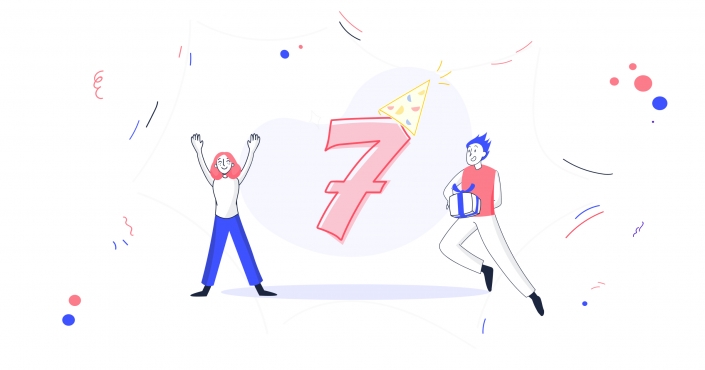Meet Ulrike Potocki, Head of Learning Strategy at Raiffeisen Bank International, a pioneer in applying Advanced Analytics and AI to state-of-the-art learning techniques, with overall 10 years of experience in Learning & Development. In addition, Ulrike used to focus on international leadership and executive development. She is also a dedicated mom and at the same time a passionate advocate of new ways of work, striving to make the world of work more human and authentic.
Path to leadership
Q: Ulrike, can you tell us more about your career path? How did you get to where you are now, and what roadblocks did you have to overcome?
I studied advertising and brand management and probably would never have seen myself in HR at the beginning of my professional career. I found the creative, colorful world of advertising much more fascinating; I didn’t have a concrete picture of HR and therefore couldn’t assess its importance for the company’s success.
More by chance and my interest in media, I started experimenting with learning media as part of my communications job at A1 to make learning experiences more exciting, fun and motivating. Aspects I had touched on during my studies in advertising psychology suddenly became the focus of my interest: How do people learn and what makes them tick? That’s how I came across the neurobiologist Gerald Hüther and discovered my passion for learning and personal development. I am fascinated by what learning experiences can trigger in people, especially combined with a person’s strengths and passions and the opportunity to apply them in the working world.
Personalized learning experience through AI
Learn how A1 Group used people analytics to identify and close the skill gaps and prepare for the future of work.
Then, through my position as International L&D Expert at A1 from 2013, I had the additional opportunity to work with inspiring experts to develop high-class talent development programs. Every week, I got to know top professors from business schools such as INSEAD, London Business School and Bocconi personally, designed learning interventions with business thought leaders and thus got to know the transformative power of learning more intensively. Since then, I have been driven by the desire to support and guide people to discover and work on becoming the best version of themselves.
Q: What or who helped and inspired you along the way?
I recently had an inspiring conversation about connectedness and relationships and that their importance will continue to grow in our society. So, I’d say it was people who accompanied, challenged and inspired me on my journey and supported me to be exactly where I am today.
I am convinced that role models, mentors, and people you rub shoulders with offer a great opportunity to grow personally. These can be experts from top business schools, successful start-up founders or the colleague at the desk next to you.
My personal highlight on this path was definitely Simon Sinek and the moment when I was able to book him for an event and get to know him in 2013. Purpose work still keeps me busy today, and the importance of connectedness is probably best expressed in my own purpose: “Making the world more human through true connections.”
Gender gap in HR leadership
Q: In this conversation, we’d like to focus on striving for more diverse leadership, specifically having more women in HR leadership roles. What are your observations on the current diversity landscape, especially in HR leadership?
My experience is that the image of the classic top manager is changing slowly. The primarily male stereotype still dominates the top echelons and the images in our heads: top executives have to be aloof and combative and under no circumstances vulnerable. In short, being successful in many places still means leaving the authentic self, with all its vulnerabilities and emotions, at home.
In my eyes, this image is particularly unattractive for many women, making them ask themselves: ‘If I don’t identify with these qualities lived out at C-level, do I want to be in top management at all? Do I have to pretend, and am I not allowed to show my femininity and strengths, such as high emotional intelligence and the ability to reflect? And if I show myself to be particularly assertive and self-confident, will it be chalked up to me all the more?’
What’s more, in many places, there is a lack of female role models of pioneers. I firmly believe that the more women are in the top positions, the more women will want to be in the top positions.
The third main reason I see is the difficulty of balancing career and family. Leadership positions are time-intensive, and women still fall to do most of the family work. The dichotomy – cutting back at work to spend time with children or having to put them in outside care – is an incredibly difficult task that mostly falls to us women. Even though the number is slowly increasing, very few men still are willing to put their jobs on hold and go to the stake for their families. There is also a lack of courageous role models who are open about their role as fathers. In general, we need better, more flexible concepts that make it possible to combine management positions with children and parenthood.
In HR, my experience is that there are often women in leadership positions. And even more often, these are the only women in top management. There is still a lot more catching up to do in this respect in other functional areas so that the HR woman doesn’t just balance out the quota.
Developing diversity at your company
Q: What strategies are you taking at Raiffeisen Bank International to develop and promote more diverse leadership, and how do you measure the success of these strategies?
The RBI Management Board made a conscious decision to appoint a diversity expert, Dr. Heike Mensi-Klarbach, to the Head of Human Resources’ position about 1.5 years ago. This decision was spurred on by an internal project dedicated to the question of what structural changes our company needs in order to bring more diversity to RBI. In 2021, all Board members set themselves explicit diversity targets, as RBI has clearly recognized gender diversity as a competitive advantage and is now working on various initiatives to bring more women into management positions. The implementation of this goal starts with the redesign of the talent management process and extends to the filling of top management positions.
Q: What advice would you offer to HR professionals trying to make a difference in their own companies?
The first piece of advice I would give to any and every HR professional is to actually consciously take a strategic and partnership role. In the words of Sheryl Sandberg, “Sit at the table.”
To be able to take on this role and give people issues the weight and voice they need, I advise:
Know your business and demand your business. Ask questions, challenge and step up boldly. I believe that the future is human-centered and that HR is a strategic partner that belongs in every board discussion.
Challenges caused by the pandemic
Q: The pandemic caused by COVID-19 had a great impact on many professionals, and in particular, women who combine their leadership role with the parent role. It is challenging to stay productive, fully involved in the decision-making process, and sort things out with the children. How has constant home office affected this? Could you share a few thoughts on how companies can support working mothers in this case?
I have to be completely honest: without daycare, it would be impossible for me to work my full-time job. In the 1st lockdown, my husband and I tried to split the care of our son. I started early and worked until noon, while my husband worked in the afternoon and evening. In between, I filled almost every free minute with work. But in the long run, this is not sustainable. The pandemic raised profound questions for me by experiencing this exceptional situation: Why have we created a system in which life without outside care is no longer conceivable? And can we do things differently?
Here I see a positive side to the lockdown. It has become normal for children to crash meetings or play in the background. I feel that something has changed, that it is allowed to be seen that children are there and take up time and space. This has encouraged me to move from my part-time, 30-hour job to the full-time position of Head of Learning Strategy at RBI and to stand up for my request to reserve three afternoons a week for my son. Because I don’t want to sacrifice my son for my job, and I want to work in a company where I can explore to find ways to balance being a mother and my job.
Paving the way to other women
Q: Finally, we’d like to ask you to share a couple of tips: Can you recommend actionable steps women in HR should take in their own leadership journeys?
For me, personally, the most critical milestone was getting to know myself. Finding out what I want and what drives me, coming to terms with my strengths and weaknesses and consciously living them.
If there is one thing that makes me a good leader, it is that I try to be authentic in everything I do. It’s hugely important to know yourself, reflect and get honest feedback.
I am a big fan of Brené Brown and the concept of “Daring Leadership”. Being able to show vulnerability, but also to set boundaries, gives me a lot of strength and motivation in my leadership role. To do that, I have to know myself very well because it’s not always easy to stick to your plans – especially when the wind is blowing in a stormy direction!
If I were to give a concrete tip, it would be to actually take time for reflection. This can often be difficult when your calendar is already bursting at the seams. So, I consciously book this time. I believe that good leadership work is consciousness work. Skills in the classical sense are essential, but you make a real difference when you work on your own attitude and consciousness. Because we have to be aware, we all pigeonhole people. The question is, do we give them the chance to get out again?
Q: What skills do they need to build to become better leaders?
One tip that I once received myself and that I find incredibly valuable is to ask yourself: “What story do you want people to tell when they get to know me?” And then actively shape this story. Good storytelling skills are, therefore, enormously important to me, as managers have to be able to inspire and engage people.
Download eBook: Women in HR leadership
Insights and actionable steps HR professionals can take to bring more gender diversity in leadership into their companies.
Stay up to date with our newsletter
Every month, we’ll send you a curated newsletter with our updates and the latest industry news.



























 info@hrforecast.de
info@hrforecast.de
 +49 89 215384810
+49 89 215384810





 Pexels
Pexels